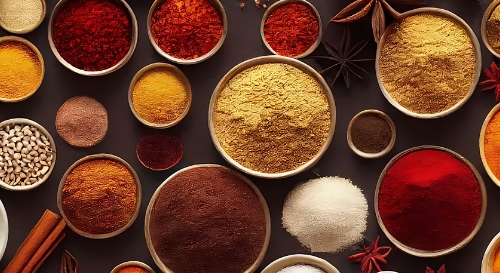
Exotic Fruit Experiences: Savoring the Unusual
Introduction
There’s something inherently exciting about tasting a fruit that is unfamiliar, bold, and entirely new to the palate. Exotic fruits—those strange, colorful, and often mysterious varieties—invite us to step outside the realm of everyday produce and explore the world’s diverse bounty. From sweet, tangy delights to earthy, sometimes pungent flavors, these fruits offer a sensory adventure unlike any other. But what makes a fruit “exotic,” and why do they hold such fascination? Let’s dive into the world of exotic fruits, their origins, the best ones to try, and the experiences they bring.
What Makes a Fruit “Exotic”?

The term “exotic” often refers to something that is foreign, unusual, or unfamiliar to a specific region. Exotic fruits, then, are those that aren’t commonly found in local markets and may hail from distant, tropical, or subtropical parts of the world. These fruits often have unique appearances, tastes, and textures that set them apart from the typical apples and oranges we’re used to seeing on grocery shelves.
Exotic fruits are not just about rarity; they offer something new, often in terms of health benefits, flavor, or cooking uses. These fruits create an opportunity for new culinary experiences, encouraging us to step beyond our usual grocery store selections and explore tastes that we might never have considered before.
A Global Exploration of Exotic Fruits
Exotic fruits are grown in tropical and subtropical regions around the world. Countries in Southeast Asia, Central America, Africa, and parts of South America boast a wide variety of unique fruits. From the steamy jungles of the Philippines to the vibrant markets of Brazil, these fruits are often deeply rooted in local culture and cuisine.
When you travel, it’s not just about sightseeing; it’s also about savoring the distinct flavors that come from the land itself. Whether it’s indulging in durian in Thailand or enjoying the sweetness of mangosteen in Malaysia, tasting exotic fruits is one of the most memorable ways to experience a destination.
The Origins of Exotic Fruits

The rise of exotic fruits can often be traced back to trade routes and global exploration. Historically, fruits like bananas and mangoes were considered exotic in places like Europe and North America until they were introduced and cultivated widely. Others, like dragon fruit and rambutan, remained relatively unknown outside their native countries until more recently.
Today, with advances in agriculture and transportation, many of these fruits are available worldwide, thanks to imports and specialty markets. However, their exotic status remains, as they continue to offer a glimpse into different cultures, flavors, and agricultural practices.
Top 5 Exotic Fruits to Try
Now that we’ve explored what makes fruits exotic, let’s take a closer look at five of the most intriguing and must-try exotic fruits:
Durian – The King of Fruits
Known for its strong smell, durian is often regarded as the king of tropical fruits. Some love it, while others find its pungent odor unbearable. But for those who can get past the scent, durian offers a custardy, rich texture and an incredibly complex flavor. It’s a fruit that divides opinions, but it’s worth experiencing, particularly in Southeast Asia where it’s a culinary staple.
Mangosteen – The Queen of Fruits
If durian is the king, then mangosteen is undoubtedly the queen. This small, round fruit is known for its sweet, tangy taste and juicy flesh. The skin is thick and purple, but once peeled, the interior is divided into segments, each bursting with refreshing flavor. Mangosteen is often referred to as the “fruit of the gods” and is celebrated for its delicate balance of sweetness and acidity.
Dragon Fruit – A Vibrant Delight

A truly striking fruit, dragon fruit features bright pink skin and white or red flesh speckled with tiny black seeds. Its mildly sweet flavor is often compared to a blend of kiwi and pear. It’s not only delicious but also visually stunning, making it a favorite in fruit salads and smoothies. Dragon fruit is also loaded with fiber, antioxidants, and vitamin C.
Rambutan – A Surprising Taste
This hairy fruit, native to Southeast Asia, is similar in flavor and texture to lychee. Once peeled, the rambutan reveals translucent, juicy flesh with a subtly sweet taste. It’s a refreshing fruit, perfect for hot climates, and is often enjoyed fresh or in desserts. The texture is similar to lychee, with a slight chewiness, making it a fun and tasty treat.
Jackfruit – The Meat of the Fruit
Larger than a melon and with a spiky exterior, jackfruit is one of the largest fruits in the world. Its flesh, when cooked, is often used as a meat substitute due to its texture, which resembles pulled pork. This makes jackfruit a popular choice for vegetarians and vegans looking for a savory fruit option. Raw jackfruit has a sweet, fruity flavor, while the cooked version is savory and hearty.
How to Taste and Enjoy Exotic Fruits
The key to enjoying exotic fruits is knowing how to properly prepare them. Many exotic fruits require specific techniques to open and consume. For instance, durian is best eaten fresh from the fruit but should be approached carefully due to its strong smell and spiky husk. Jackfruit needs to be carefully cut, and the flesh can be eaten raw or cooked. It’s important to understand the texture, flavor, and best way to prepare each fruit to fully appreciate its uniqueness.
Pairing Exotic Fruits with Other Foods
Exotic fruits can be paired with a variety of dishes to enhance their flavor profile. For example, mangosteen works wonderfully with creamy coconut desserts, while dragon fruit can be added to smoothies or salads for a refreshing twist. Pairing these fruits with traditional spices and herbs of their regions can elevate their flavors and give you a deeper taste of the local cuisine.
The Best Times to Enjoy Exotic Fruits
Timing plays a key role in experiencing the best flavors of exotic fruits. Many fruits, such as mangosteen and rambutan, are seasonal, so knowing when they are in peak season will ensure you get the freshest, most flavorful varieties. Typically, these fruits are available in tropical regions during the rainy season, which coincides with their growing season.
Health Benefits of Exotic Fruits
Exotic fruits aren’t just a treat for your taste buds—they’re also packed with essential nutrients. Many exotic fruits are high in vitamins, minerals, and antioxidants, making them an excellent addition to a healthy diet. For example, dragon fruit is rich in fiber and vitamin C, while durian is a great source of energy, rich in healthy fats and carbohydrates.
Packed with Nutrients and Antioxidants
Most exotic fruits, such as jackfruit and mangosteen, are packed with vitamins like A and C, which help boost your immune system and promote skin health. The antioxidants found in these fruits help combat free radicals in the body, reducing oxidative stress and supporting overall health.
Boosting Immunity and Digestion
Many exotic fruits like rambutan and mangosteen are known to aid digestion, thanks to their high fiber content. Their natural enzymes can help improve gut health and promote regular digestion. Additionally, their vitamin content can strengthen the immune system, reducing the likelihood of illness.
Where to Find Exotic Fruits
Exotic fruits can be found in specialty markets, international grocery stores, or even online. Many larger cities with multicultural populations will have stores that import fruits from tropical regions. Additionally, some supermarkets now carry a range of exotic fruits, making it easier to find these delights without having to travel far.
International Markets and Online Stores
If you’re not in a tropical area, fear not! Many online stores specialize in importing exotic fruits directly from their countries of origin. Whether it’s through a local international market or online delivery services, you can easily source your favorite exotic fruits and have them delivered to your doorstep.
Conclusion
The world of exotic fruits is rich with history, culture, and, of course, flavor. By exploring these fruits, we not only treat our taste buds to something new but also deepen our understanding of the cultures that produce them. From the pungent durian to the refreshing rambutan, these fruits offer more than just nutrition—they offer a sensory journey that can transport you to faraway places. So, why not take the plunge and indulge in these unusual delights on your next culinary adventure?
Frequently Asked Questions
- What are the health benefits of exotic fruits?
Exotic fruits are often high in vitamins, antioxidants, and fiber, which promote good health, boost immunity, and aid digestion. - Can I find exotic fruits in my local grocery store?
Depending on your location, some exotic fruits may be available in international markets or specialty grocery stores. You can also find them online. - How do I prepare exotic fruits like durian and jackfruit?
Many exotic fruits require specific preparation methods. Durian should be carefully peeled, while jackfruit can be cut open and eaten raw or cooked in savory dishes. - Are exotic fruits expensive?
Exotic fruits can be more expensive than standard fruits due to their rarity and the cost of importation. However, prices vary depending on where you live and the fruit’s availability.




